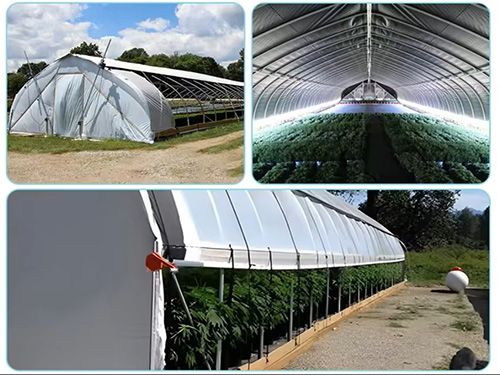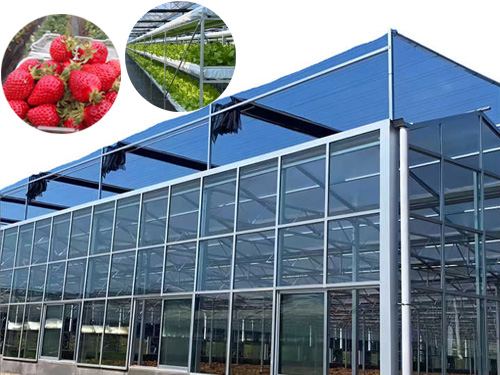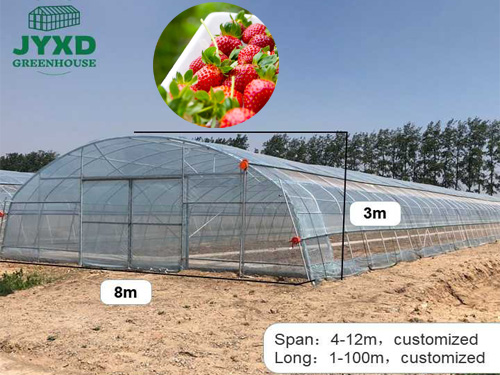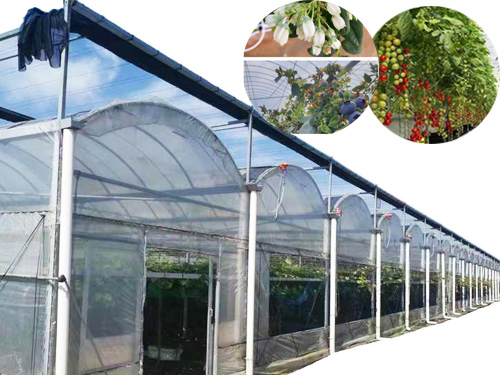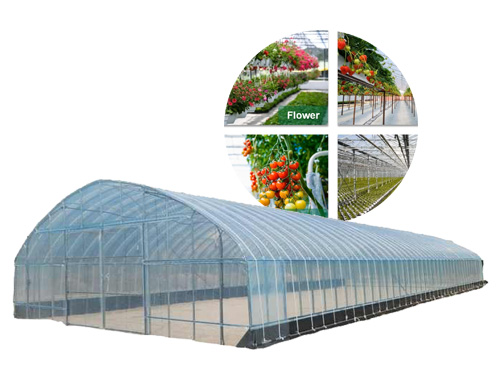NEWS DETAILS
NEWS INFORMATION
Greenhouse Pest Control: Prevention Techniques and Management Strategies
AUTHOR:jyxd-greenhouse DATE:2025-01-14 12:50:19 HITS:174
Maintaining a healthy greenhouse environment requires not only proper temperature, humidity, and light control but also effective pest management. Greenhouse pests can damage crops, reduce yields, and introduce diseases, which can lead to significant losses. Therefore, implementing efficient pest control strategies is crucial for ensuring plant health and sustainability. In this article, we will discuss various prevention techniques and management strategies to help greenhouse operators protect their crops from pests.
Why Pest Control is Essential in Greenhouses
Pests pose a significant threat to greenhouse operations, where conditions are often ideal for them to thrive. These pests can cause a variety of problems, including:
· Crop Damage: Pests can feed on plant leaves, stems, and roots, causing direct damage and stunted growth.
· Disease Transmission: Many pests, such as aphids and whiteflies, are vectors for plant diseases, spreading infections throughout the greenhouse.
· Reduced Yields: Heavy infestations can lead to reduced plant health, ultimately affecting the quantity and quality of the harvest.
· Increased Costs: Pest damage can lead to the need for additional resources such as pesticides, labor, and crop replacements, adding unnecessary expenses.
Effective pest control is therefore necessary to minimize these risks and ensure the greenhouse remains a productive and healthy environment for plants.
Preventive Measures for Greenhouse Pest Control
Prevention is the first and most effective line of defense against pests in a greenhouse. By creating an environment that discourages pest infestations, greenhouse operators can reduce the need for chemical treatments and maintain healthier crops. Here are some key preventive measures:
1. Maintain Cleanliness
A clean greenhouse is less likely to harbor pests. Regularly removing plant debris, dead leaves, and spent crops prevents pests from finding shelter and breeding grounds. Additionally, cleaning tools, pots, and equipment can help minimize the risk of introducing pests into the greenhouse.
· Sanitize Tools: Before bringing new plants into the greenhouse, sanitize all gardening tools to prevent the transfer of pests.
· Remove Dead Plants: Dispose of dead plants and plant waste promptly to avoid attracting pests.
2. Inspect Incoming Plants
Before introducing new plants into the greenhouse, it is essential to inspect them thoroughly for any signs of pests or diseases. Quarantining new plants for a week or two before adding them to the main greenhouse can help prevent the spread of any potential infestations.
3. Proper Ventilation and Humidity Control
Maintaining proper ventilation helps to prevent the buildup of excessive humidity, which can attract pests like mold, fungi, and certain insects. By using fans and ensuring that the greenhouse is well-ventilated, you can reduce the likelihood of pests taking hold.
4. Use Physical Barriers
Physical barriers, such as mesh screens, can prevent pests from entering the greenhouse. Installing screens on vents, windows, and doors can help block pests like aphids, whiteflies, and moths from entering the space.
5. Crop Rotation
Implementing crop rotation helps disrupt the life cycles of pests and reduces the likelihood of a pest infestation. By changing the type of crops grown in a particular area of the greenhouse, you can prevent pests from finding a continuous food source.
Pest Management Strategies
When pests do make their way into the greenhouse, a proactive pest management strategy is essential. A combination of biological, chemical, and cultural control methods can help manage pest populations effectively.
1. Biological Control
Biological control involves using natural predators or parasites to control pest populations. This is an eco-friendly and sustainable approach that minimizes the need for harmful chemicals. Some effective biological control options include:
· Beneficial Insects: Introduce natural predators such as ladybugs, predatory mites, and parasitic wasps, which target common pests like aphids, spider mites, and whiteflies.
· Nematodes: These microscopic worms can be introduced into the soil to control soil-borne pests like root aphids and grubs.
· Bacteria and Fungi: Certain beneficial bacteria and fungi can be used to target pests like caterpillars, aphids, and other harmful insects without harming plants.
2. Chemical Control
While chemical control should be a last resort, it may be necessary in severe infestations. When using chemical pesticides, it is important to choose the right products that are safe for the plants and the environment. Some guidelines for effective chemical control include:
· Use Targeted Pesticides: Select pesticides that are specifically designed to target the pests affecting your crops, ensuring minimal impact on beneficial insects.
· Follow Application Instructions: Always read and follow the manufacturer's guidelines for pesticide application, including dosage and frequency, to avoid harming plants and pollinators.
· Rotate Pesticides: Pests can build resistance to certain chemicals over time, so rotating between different types of pesticides can help prevent resistance development.
3. Cultural Control Methods
Cultural control involves altering the growing environment or plant care practices to make it less favorable for pests. Common cultural control methods include:
· Pruning and Thinning: Regularly prune plants to improve airflow and reduce areas where pests can hide. Thinning overcrowded plants can also help reduce pest hiding spots.
· Watering Practices: Watering plants at the base rather than overhead can prevent moisture from collecting on the leaves, reducing the risk of fungal infections and pest infestations.
· Mulching: Applying mulch around the base of plants can help prevent weeds, which can serve as a habitat for pests.
4. Sticky Traps and Pheromone Lures
Sticky traps are an effective way to capture flying pests like aphids, whiteflies, and thrips. These traps can be placed near plants or vents to monitor and control pest populations. Pheromone lures, which attract pests like moths, can also be used to monitor pest presence and help with early detection.
Integrated Pest Management (IPM) Approach
Integrated Pest Management (IPM) is an effective, holistic approach to pest control that combines multiple techniques, including prevention, monitoring, and treatment. The goal of IPM is to control pest populations while minimizing harm to the environment, beneficial insects, and human health. Key components of an IPM approach include:
· Regular Monitoring: Regularly inspect plants and the surrounding environment for signs of pests.
· Threshold Levels: Establish action thresholds to determine when pest populations are high enough to warrant intervention.
· Combination of Control Methods: Use a combination of biological, cultural, mechanical, and chemical controls to manage pests in a balanced and sustainable manner.
Conclusion
Effective pest control is essential for maintaining a healthy and productive greenhouse environment. By implementing a combination of preventive measures and management strategies, greenhouse operators can minimize the risk of pest infestations, reduce crop damage, and improve overall plant health. The use of biological control, cultural practices, and chemical treatments, when necessary, can help maintain a pest-free environment. With proactive monitoring and an integrated pest management approach, greenhouses can thrive while minimizing the impact of pests on their crops.
Hebei Juyou Xinda Greenhouse Facilities Co.,Ltd.
Copyright © 2024-2025 https://www.jyxd-greenhouse.com. All Rights Reserved Hebei Juyou Xinda Greenhouse Facilities Co.,Ltd.Copyright





 Current Location:
Current Location:


